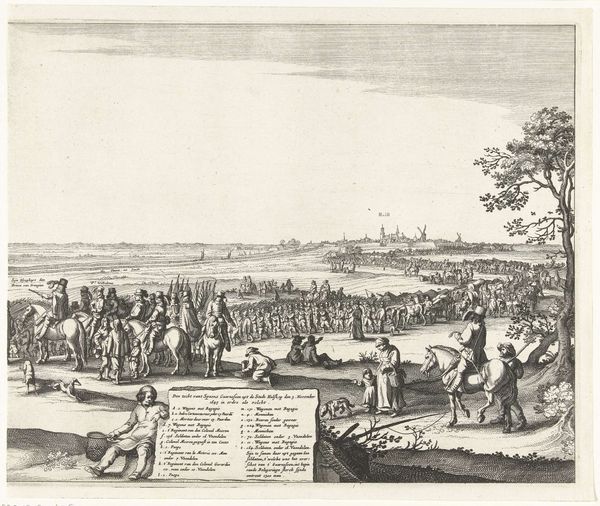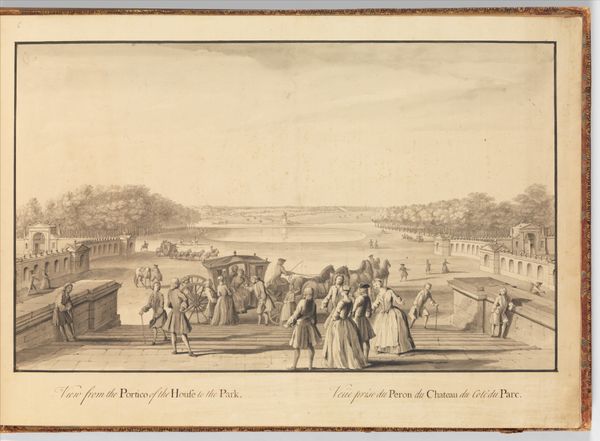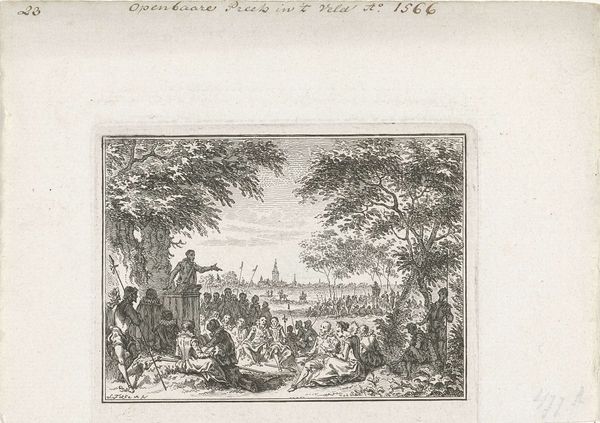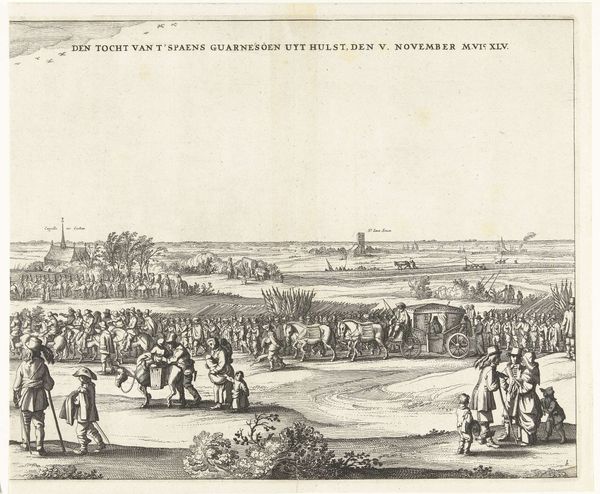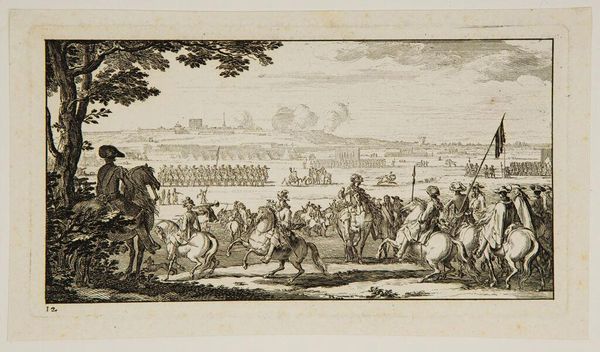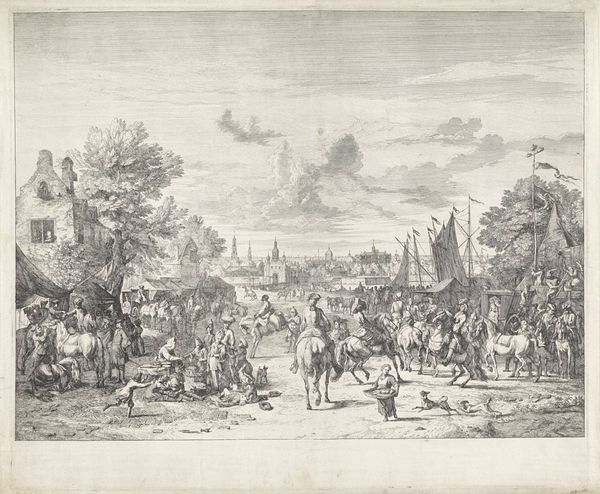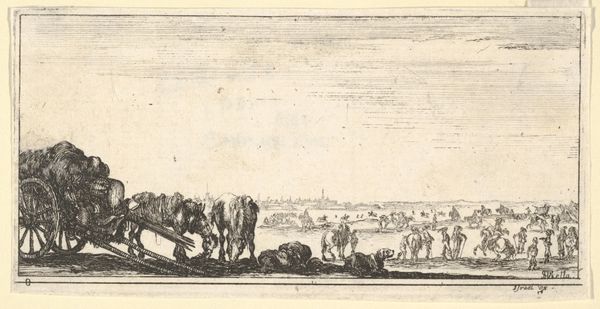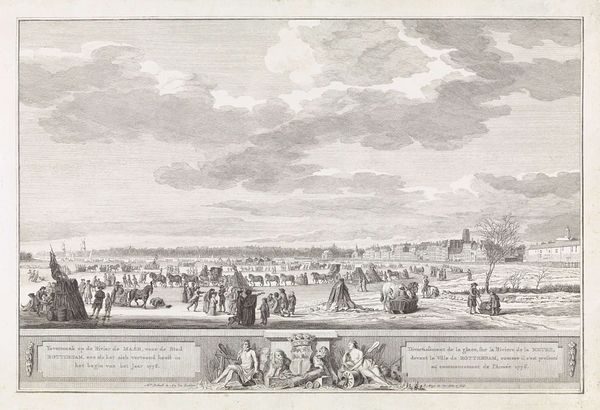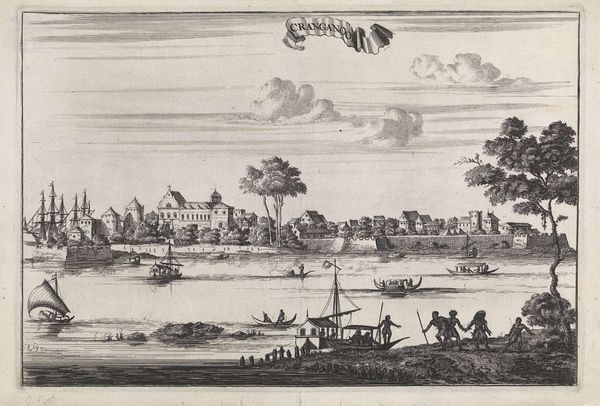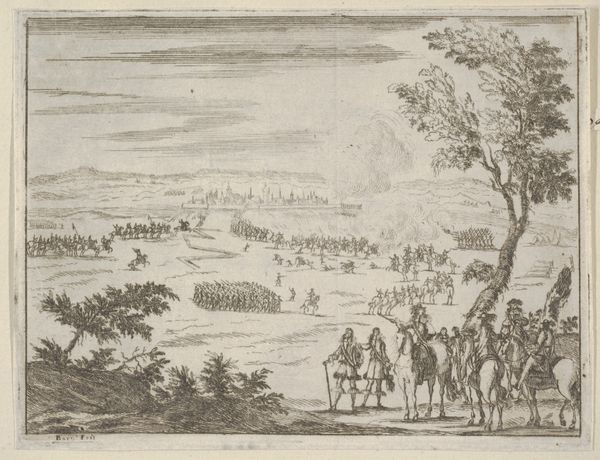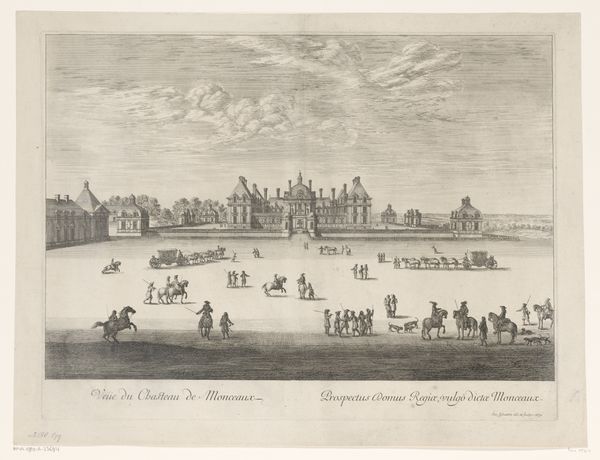
View of Such Parts as are Seen from the Building at the Head of the Lake at Stowe, Buckinghamshire 1734 - 1744
0:00
0:00
drawing, print
#
pen and ink
#
tree
#
landscape illustration sketch
#
drawing
#
lake
#
toned paper
#
mechanical pen drawing
# print
#
pen sketch
#
pencil sketch
#
pen-ink sketch
#
men
#
pen work
#
pencil art
#
watercolor
Dimensions: sheet: 14 5/8 x 30 3/16 in. (37.2 x 76.6 cm)
Copyright: Public Domain
Editor: So, here we have "View of Such Parts as are Seen from the Building at the Head of the Lake at Stowe, Buckinghamshire" made between 1734 and 1744 by Jacques Rigaud. It’s a drawing made with pen and ink. The whole scene feels very staged, almost like a theater set, with that gathering of people so prominently placed. How do you read this artwork? Curator: Well, this meticulously crafted landscape isn't just a pretty picture. It's a potent assertion of power and social order. Stowe, and its designed landscapes, became symbols of Whig ideals – liberty, reason, and cultivated nature – in opposition to the perceived absolutism of the monarchy. Rigaud's print served to disseminate that message. Editor: So, the very act of depicting it was a political statement? Curator: Precisely! These carefully orchestrated landscapes, visually captured and widely distributed as prints, reinforced the social and political ideologies of the elite who commissioned them. What kind of messages are being conveyed, implicitly or explicitly, do you think? Editor: I guess the message could be that they are enlightened rulers who manage their land in such a beautiful manner for their population, right? This level of landscape design certainly communicates control and mastery over nature. Curator: Absolutely. And that control mirrored their social control. Think about the audience for this print, what social circles did these kind of artistic displays circulate through? Editor: Probably exclusively amongst the wealthy landowners. They’re celebrating themselves for each other, advertising their aesthetic choices to validate them amongst the same upper crust circles. Curator: Exactly! It's fascinating how landscape imagery became a vehicle for asserting political and social dominance during this period. It is certainly a kind of public facing politics communicated through art. I find I see this image a bit differently now, how about you? Editor: Absolutely, that historical perspective adds so many layers of meaning. I was caught up in the composition, but the social context completely transforms the image. Thanks for your comments.
Comments
No comments
Be the first to comment and join the conversation on the ultimate creative platform.
